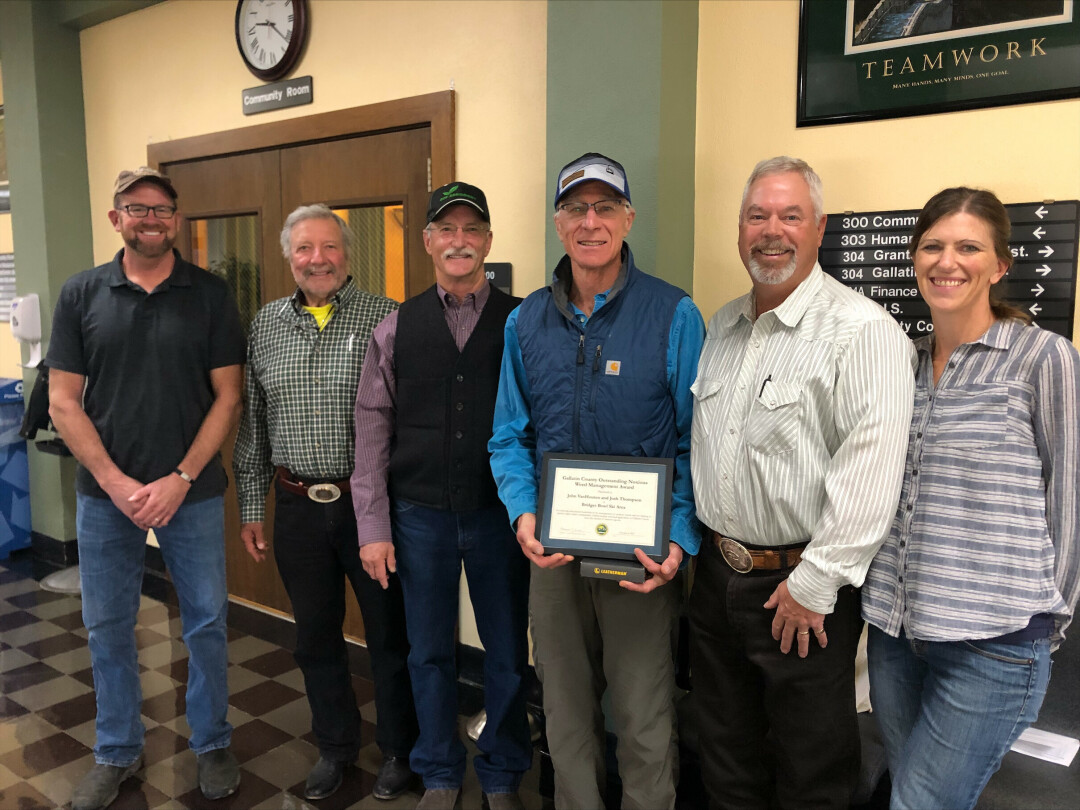Bridger Bowl Honored with First-Ever Gallatin County Outstanding Noxious Weed Management Award

Two employees of Bridger Bowl Ski Area were recognized for their contributions to noxious weed management and their dedication to promoting healthy plant communities in Gallatin County.
John VanHouten and Josh Thompson received the first-ever Gallatin County Outstanding Noxious Weed Management Award. They were honored at the Gallatin County Commission’s meeting on Tuesday, Oct. 4.
“Gallatin County is always very appreciative of those who go out of their way to manage noxious weeds on their property. Bridger Bowl is doing a lot,” said Gallatin County Commissioner Joe Skinner.
The Gallatin County Weed District wanted to honor these individuals or groups who are a vital part of noxious weed management in our county.
The award recognizes landowners and managers who do an exceptional job of controlling noxious weeds. These stewards are not only caring for their own land but are helping to protect the wild lands and local agriculture that make our county such a wonderful place to live.
The Weed District sought nominations over the summer. The Weed Board then reviewed the nominations and voted to give VanHouten and Thompson the award.
In nominating VanHouten and Thompson, it was noted that Bridger Bowl puts significant effort into promoting native forbs and grasses while reducing and eliminating noxious weeds on their over 2,000 acres of both private and federal land.
Bridger Bowl’s work includes regularly scheduled patrols, mowing and hand pulling to reduce weed seed production on the ski hill’s main runs, spraying to prevent weeds, and paying particular attention to parking lots that bring in outside weeds. If an infestation is identified, it is remediated, and the area is flagged for follow-up. And any areas of disturbance are seeded back to native grasses and monitored for weed germination over the next few years.
Bridger Bowl also collaborates regularly with Gallatin County, the U.S. Forest Service, and their neighbors Bridger Pines and Crosscut Mountain Sports Center.
Steve Saunders, member of the Gallatin County Weed Board, said the award offers an opportunity to educate the public and bring awareness to the importance noxious weed management. But it also is a chance to recognize folks who are truly making a difference.
“That’s what we’re looking for – people who really care,” Saunders said.




News Comments
This is so typical of a sign in, which we should not have to do to check if we or some one in our party got a permit. I have been working or "creating an account" for 30 minutes and just get the same ...
Smith River permit drawing results available
Sunday, Mar. 10, 2024
I have struggled with this podcast and my own participation therein, the event itself obviously traumatic, but beyond that my inability to reach anyone and convey anything resembling truth. The person ...
Billings, MT Case Becomes True Crime Podcast | 'An Absurd Result'
Marktokarski
Saturday, Jan. 20, 2024
Why not leave those cheerful, colorful garlands up longer? What’s the rush?
Main Street Closed Jan 2
Saturday, Dec. 30, 2023
You do not have the authority to determine what may or may not be sensitive lands! This is an example of extreme overreach on your part.
City of Bozeman, Gallatin County Adopt Sensitive Lands Protection Plan
Friday, Dec. 22, 2023